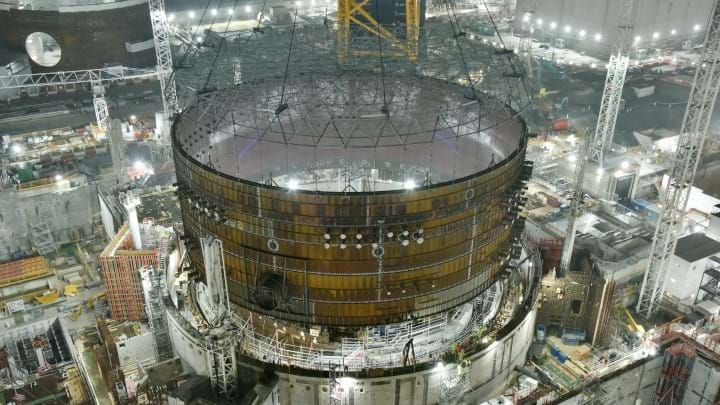UK declares biggest nuclear investment in 70 years

New reactors and fuel production plants planned
THE UK government wants to build a new large-scale nuclear plant and will invest £310m (US$393m) in advanced fuel production and skills in a bid to bolster energy security.
Its Civil Nuclear Roadmap was launched in January to deliver on the existing commitment for nuclear power to generate 25% of the UK’s electricity by 2050. This includes building a new large nuclear power station the size of Hinkley Point C to help meet this target, which involves almost quadrupling nuclear power output from 6.5 GW today to 24 GW.
The government also wants to secure 3–7 GW worth of investment decisions in new nuclear every five years from 2030 to 2044. This includes attracting investments in conventional large-scale water-cooled plants, small modular reactors (SMRs) that chiefly use similar techniques but can be built in factories to reduce project costs, and advanced modular reactors (AMRs) that use novel fuels and coolants.
Claire Coutinho, secretary of state for energy security and net zero, said: “We’re making the biggest investment in domestic nuclear energy in 70 years. Our £300m plan to produce advanced nuclear fuel in the UK will supply nuclear plants at home and overseas.”
Advanced fuel production
Most reactors operating today are light water reactors. These use fuel that has been enriched to contain around 2–5% of the uranium-235 isotope which contributes to the fission process. By switching enrichment processes from gaseous diffusion to centrifugal techniques, it is economically viable to enrich fuels beyond 5%, producing high-assay low-enriched uranium (HALEU) fuel for new reactors. This allows for longer operating cycles, smaller reactors, and produces less radioactive waste.
Currently, only Russia and China have the plants needed to produce HALEU at scale, though the US is also racing to catch up. Centrus Energy announced in October that it has begun producing fuel at demonstration scale in Ohio and it delivered the first batch of fuel to the US government in November.
The UK will spend £300m establishing HALEU enrichment and deconversion capabilities by the end of the decade. The Nuclear Decommissioning Authority (NDA) has been instructed to make space at the Springfields nuclear fuels fabrication site in northwest England to support this.
“We recognise the unique importance of the UK’s two existing nuclear fuel sites, at Capenhurst and Springfields, in delivering our nuclear ambitions, and that we may need to give particular consideration to the nature of these sites. We also recognise that we may need to consider whether additional nuclear fuel sites are required,” the roadmap says.
Through the Nuclear Fuels Fund it will invest £6m in a uranics innovation centre at the National Nuclear Laboratory (NNL) in partnership with UK universities to support the development of front-end fuels capabilities and expertise. The NNL will receive a further £3.35m to produce a concept design for a HALEU deconversion test facility. And £800,000 will be spent on a siting study for new nuclear fuel production facilities.
Skills
The government acknowledged that the lengthy pause since the UK’s newest nuclear plant was completed in 1995 has led to a loss of key skills. The employer-led Nuclear Skills Strategy Group estimates the nuclear workforce will need to double over the next 20 years – supporting 80,000 additional skilled jobs – to meet targets.
Reacting to the roadmap, Fiona Rayment, president of the Nuclear Institute, said: “Reaching 24 GW by 2050 is achievable but challenging and recognising the need to address the skills and capability challenges in enabling this is key.”
Last year, the government launched a Nuclear Skills Taskforce and expects its recommendations will be published early this year. These are expected to include calls for an increase in apprenticeships and industrial placements, and for more bursary schemes for STEM subjects to boost the number of graduates entering the nuclear sector.
This article is adapted from an earlier online version.
Recent Editions
Catch up on the latest news, views and jobs from The Chemical Engineer. Below are the four latest issues. View a wider selection of the archive from within the Magazine section of this site.




